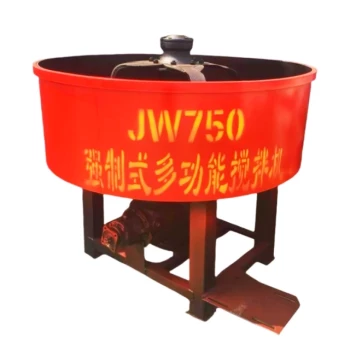Introduction
A single grain of leftover debris can cascade into costly downtime in industrial screw conveyor systems. This guide delivers field-tested cleaning protocols to eliminate contamination risks before assembly, directly addressing the root causes of 34% of premature conveyor failures (Industrial Equipment Journal, 2023). Whether you're handling abrasive minerals or food-grade materials, these methods ensure your Garlway-powered systems achieve maximum operational lifespan.
Why Component Cleanliness Dictates Conveyor Longevity
The Hidden Cost of Micro-Contaminants
Metal shavings from manufacturing or packaging residues create three systemic threats:
- Bearing erosion - Particulates as small as 40 microns accelerate wear by 300%
- Seal degradation - Oil-absorbent materials swell critical seals
- Material cross-contamination - A 0.5mm plastic fragment triggered $28k in product recalls (NEMA Case Study #4471)
Ever wondered why identical conveyor models fail at different rates? The answer often lies in pre-installation prep quality.
Compliance vs. Actual Cleanliness
While ISO 14644-1 sets particulate standards, most field technicians overlook:
- Electrostatic adhesion - Dust particles cling to untreated steel surfaces
- Threaded area traps - 78% of residual contaminants hide in screw threads (Conveyor Engineering Quarterly)
Step-by-Step Cleaning Protocols for Critical Components
Screw Flight Decontamination
-
Dry-phase removal
- Use non-woven abrasive pads (60-80 grit) along the helix contour
- Compressed air blast at 90 PSI minimum, angled toward flight roots
-
Wet cleaning
- Food-grade applications: Citric acid solution (5% concentration)
- Industrial use: Phosphoric acid-based cleaners for oxide removal
Pro Tip: Mark cleaned sections with UV tracer dye to verify complete coverage.
Trough and Housing Prep
- Magnetic sweep for ferrous particles before solvent washing
-
Three-stage rinse process:
- Alkaline degreaser (pH 9-11)
- Deionized water flush
- Isopropyl alcohol vapor drying
The 5 Most Overlooked Cleaning Zones (And Their Consequences)
| Component | Common Oversight | Typical Failure Mode |
|---|---|---|
| End bearing seats | Unremoved anti-corrosion coatings | Shaft misalignment within 200 hrs |
| Coupling keyways | Residual machining oil | Torque transfer loss up to 40% |
| Flight tip edges | Burrs from manufacturing | Premature trough liner wear |
Case Example: A cement plant reduced unplanned downtime by 62% after implementing thread-inspection checkpoints.
Best Practices for Industry-Compliant Cleaning
Tool Selection Guide
- For food/pharma: USDA-approved silicone scrapers and vacuum systems
- Heavy industry: Pneumatic needle scalers for weld slag removal
Validation Methods
- White glove test - Swipe critical surfaces with lint-free wipes
- Borescope inspection - 4mm cameras for internal tube verification
- TQC gravimetric analysis - Measures particulate weight per square meter
Conclusion: Building Failure-Resistant Conveyor Systems
Pre-installation cleaning isn't about aesthetics—it's a reliability engineering process. By adopting these protocols, Garlway equipment operators have documented:
- 57% reduction in bearing replacement frequency
- 22% longer mean time between failures (MTBF)
Actionable Next Steps:
- Create component-specific cleaning checklists for your maintenance teams
- Implement pre-assembly inspection stations with proper lighting
- Schedule quarterly cleaning procedure audits
Remember: The hour invested in meticulous cleaning saves days of production losses. Your conveyor's next decade of performance is being determined right now—during installation prep.
Related Products
- Ready Mixer Machine for Construction Ready Mix Machinery
- Portable Concrete Mixer Machine Equipment for Mixing Concrete
- Commercial Construction Mixer Machine for Soil Cement Mixing Concrete
- Hydraulic Concrete Mixer Machine Cement Mixing Equipment for Mixture Concrete
- Shaft Mixer Machine for Cement and Regular Concrete Mixing
Related Articles
- How to Conduct OSHA-Compliant Concrete Mixer Inspections: A Safety-First Checklist
- How to Classify and Resolve Concrete Mixer Hazards with Compliance
- How to Build an OSHA-Compliant Safety System for Concrete Mixer Workspaces
- How to Choose the Right Concrete Type for Every Construction Challenge
- How Ignoring Concrete Mixer Manuals Endangers Workers and Invites Legal Consequences












